Defining the strategy, how successful companies are generating huge ROI, and why technology is critical to improving efficiency and growing referral revenue
If you polled a group of marketing leaders and asked them to name their favorite type of lead, one response would stand out: Referrals.
| Truth is, research has repeatedly shown that referred leads close faster, buy more, and stay longer — all with significantly less effort and at a much lower CPA than non-referred prospects. In fact, a University of Pennsylvania study found that referred customers are more loyal and profitable — by a 16% margin — than their non-referred counterparts. And our own research (a 2016 survey of 2,000 Americans conducted by Harris Poll) revealed that 82% of Americans seek recommendations from friends and family when considering a purchase. | 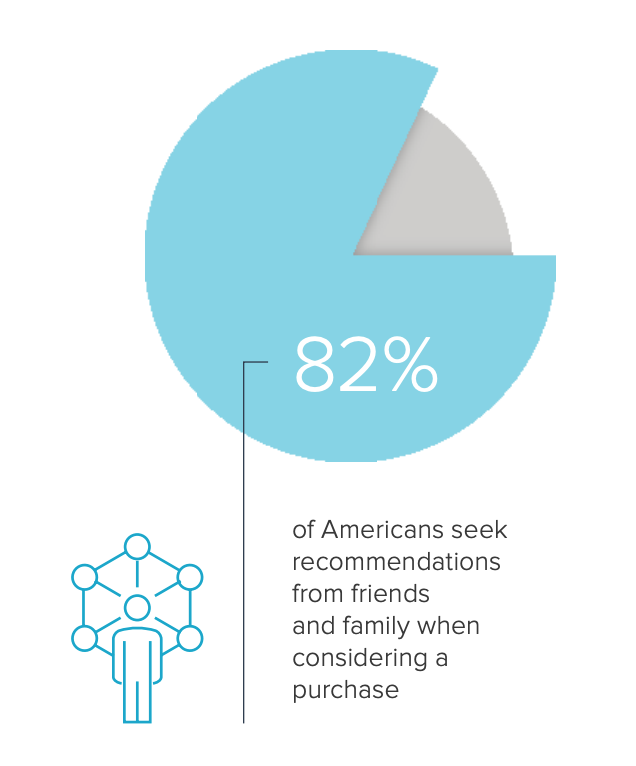
|
Referrals aren’t just the channel-of-choice for consumers, either. New research from HubSpot found that 60% of decision makers rely on word-of-mouth, friends, and referrals when making purchasing decisions for business software — the highest percentage of any channel cited in HubSpot’s survey.
Thing is, you probably already knew referrals were incredibly valuable. But do you have a strategy in place to track and measure them? Are you modeling your program — if you have one at all — after proven best practices? And are you leveraging the right technologies to optimize your campaigns, scale your program, and drive referral ROI as high as possible?
Those are the questions we’re here to help you answer. In this guide, we’ll cover:
- Best practices for building and optimizing a referral marketing strategy
- Real world examples of companies leveraging referral marketing to scale revenue
- Tactical tips to help you choose the right referral software
Ready to get started? Dive in. By investing just a few minutes, you’ll put your business in a much better position to make smarter investments that deliver big bottom-line results.
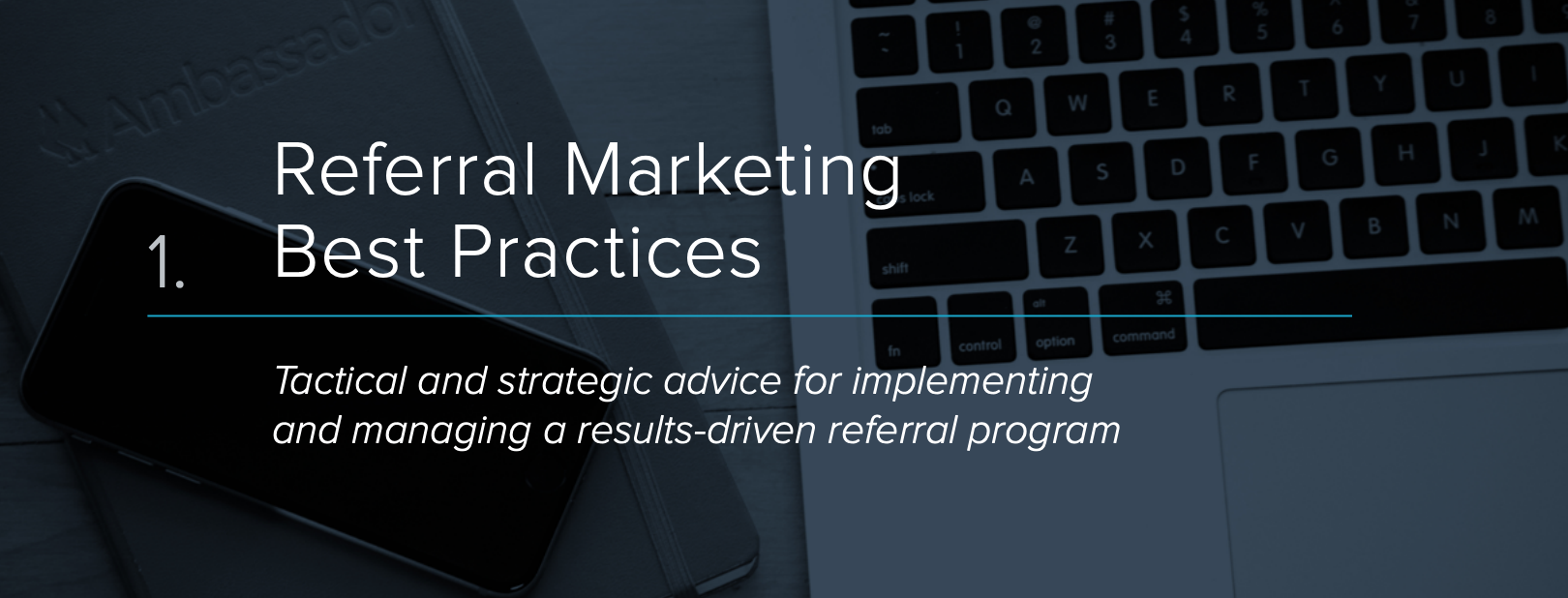
In the eyes of many marketing leaders, referrals are viewed as an organic byproduct of the company doing its job. The thinking is that the combination of a great product and excellent service will naturally yield a steady flow of referrals.
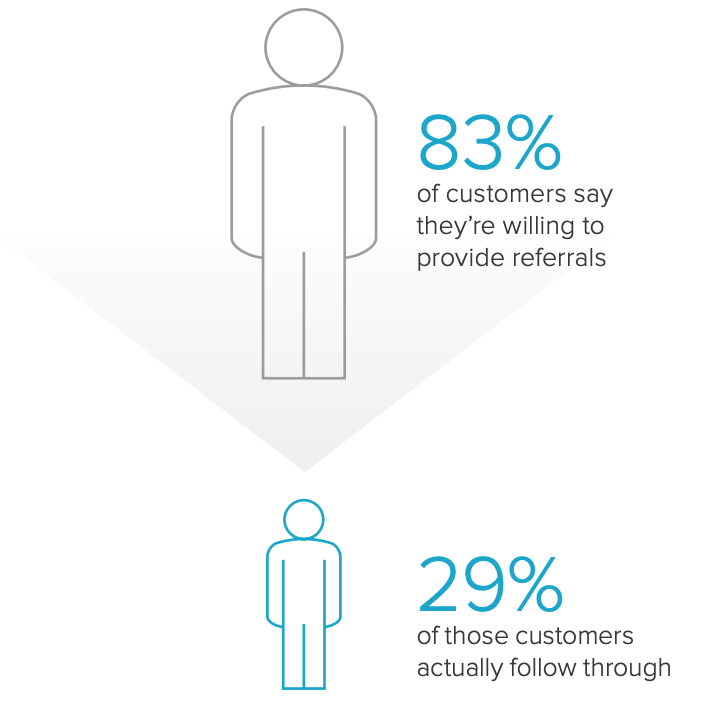 |
The problem with that assumption? Research suggests it’s not true. |
While referrals do happen organically, research by Texas Tech University suggests they’re never a given — even if customers love your products and services. In fact, Texas Tech’s study found that while 83 percent of customers say they’re willing to provide referrals after a positive brand experience, only 29 percent actually do.
That chasm exists for many reasons, but it’s often exacerbated by a failure to properly prioritize and manage a customer referral program (assuming your company has one at all). By contrast, businesses that develop structure and process around cultivating and scaling referrals see much different results (more on that in the next chapter).
Specifically, the brands that get referral marketing right adhere to few essential best practices.
- Incorporate referrals into your overall marketing strategy
The best referral marketing programs share a common thread: referrals are embedded into every aspect of the user experience. Referral calls to action are included in newsletters and blogs. Employee email signatures feature referral messaging. And the referral program is fully integrated with other critical systems (customer-relationship management, marketing automation, eCommerce technology, point-of-sale systems, optimization tools, etc.).
How to apply this: For referrals to consistently deliver bottom-line results, they must be woven into of how your team thinks and operates. Without consistent focus on how referral marketing can be applied to other channels and campaigns, you’re largely at the mercy of chance. When your team has any discussion about marketing campaigns, make sure word-of-mouth is part of it.
- Continuously test, evaluate, and optimize referral campaigns
Once you get a referral marketing program up and running, it’s easy to fall into the trap of assuming the engine will run itself. That’s a mistake. Like all strategic marketing initiatives, referral marketing programs thrive in an environment of perpetual optimization. Your team should be constantly measuring and evaluating referral conversion metrics and fine-tuning the strategy to optimize results.
How to apply this: This is where referral marketing software can be enormously helpful. With the right tool (and the right integrations), your team will feel empowered to experiment and iterate. Over time, the analytics created by that process will shed light on clear trends that help you see the activities, channels and customer personas that are driving the best results.
- Make it incredibly easy to find and use your referral program
Here’s an existential question to answer: If you have a referral marketing program in place and no one knows about it, does it really exist?
If your referral program isn’t public facing or it’s difficult to use and share with the click of a button, then you’ll severely limit your performance. The most successful brands feature their referral programs on their website, in mobile apps, and across highest-performing marketing channels — and they ensure the referral experience is painless and seamless.
How to apply this: To create a super simple, enjoyable referral experience for your customers and advocates, push your team to answer these questions:
- Where and when will customers want to share or talk about your brand or products?
- Are you requiring your ambassadors to do the heavy lifting to find friends who might be interested in your company?
- Are the referral program landing pages easy to find and share via mobile devices?
- Are you able to quickly pay out referral incentives — and do so in the way your ambassadors want to receive them (i.e., cash, loyalty points, vouchers, etc.)?
As a marketing organization, your goal should be to make the referral process as enjoyable as any other brand touchpoint. When you do that, you’ll see an exponential rise in the number of ambassadors — customers, fans, admirers, influencers advocates, etc. — willing to promote your brand.
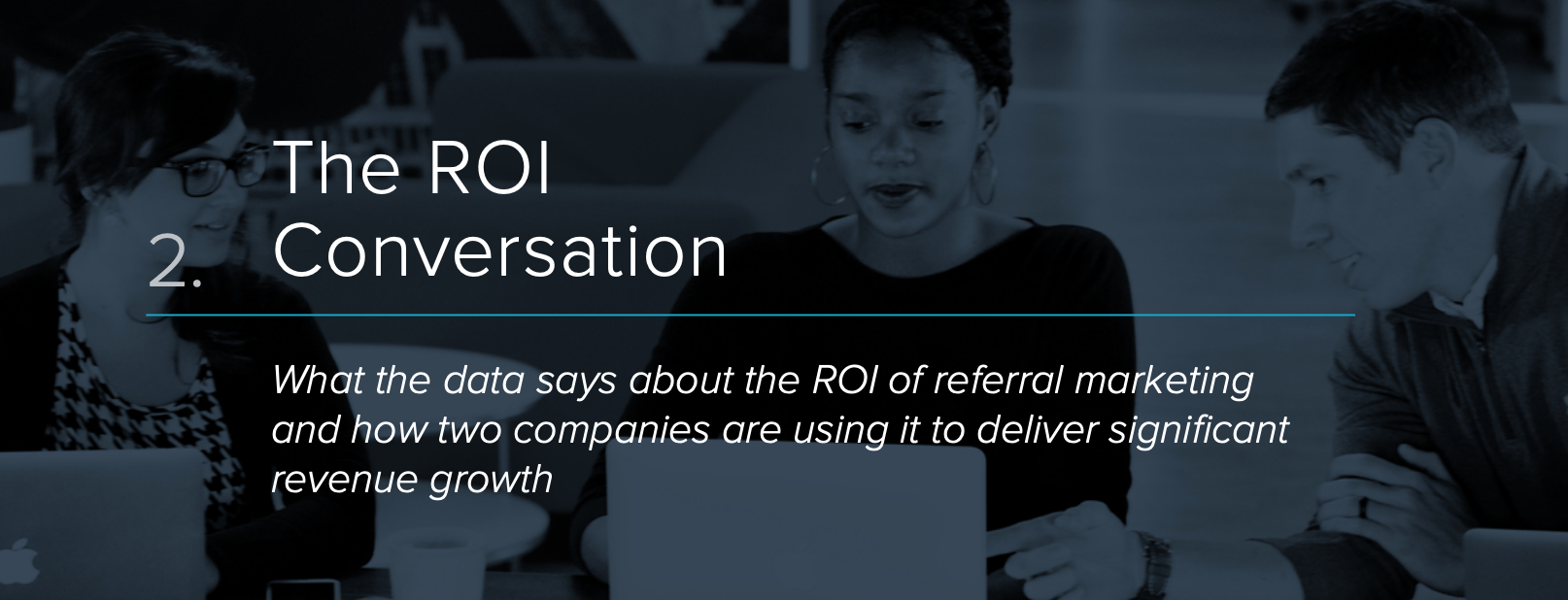
While most marketing executives understand that referrals are the gold standard of lead generation and customer acquisition, some aren’t sold on whether referral marketing will actually work.
This chapter will bust that myth.
|
|
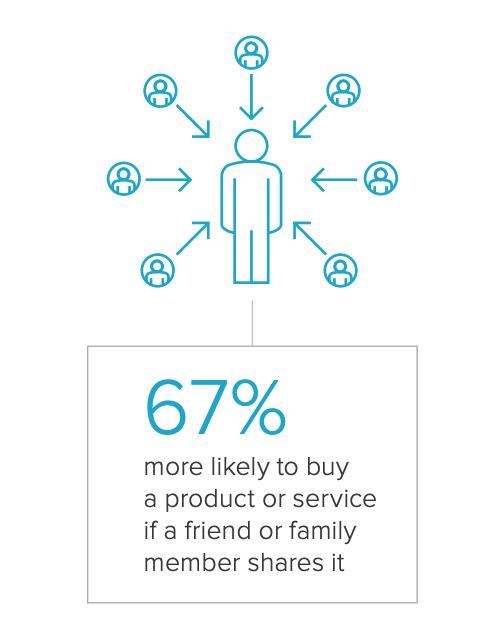
|
Now, think about your own prospects and existing customers. If more than three-quarters of them are seeking recommendations and two-thirds are more likely to convert via referrals, how much would your bottom line grow if you invested in a strategy that revolved around managing, optimizing, incentivizing, and scaling that organic word-of-mouth?
Two Real-World Examples of Referral Marketing in Action
To help you envision that scenario, here are two examples of companies that are successfully leveraging referral marketing to drive significant revenue growth.

The company: Volusion, an award-winning eCommerce platform trusted by more than 40,000 businesses
The use case: With thousands of happy clients, referrals have always been a natural part of Volusion’s customer acquisition strategy. But, until 2015, Volusion lacked the processes and strategic tools it needed to easily manage, measure, and automate its referral marketing efforts at scale.
The results: That changed when Volusion partnered with Ambassador. By early 2016, Volusion had significantly ramped up its referral strategy and streamlined its efforts to dramatically improve efficiency. To date, the company has acquired more than 1,000 customers and generated seven-figures of new revenue directly through its referral marketing program.

The company: Litter-Robot, a growing eCommerce brand on the leading edge of pet technology and design
The challenge: Prior to implementing Ambassador, Litter-Robot relied on ShareASale and a manual coupon system to manage and track affiliate and influencer programs. While that approach generated some results, Litter-Robot Marketing Manager David Saterstad says it was time-consuming, inefficient, and difficult to track.
“A few times per month, we’d have to package up coupons to replenish our ambassadors and, twice a month, we’d have to go in and manually verify that the program wasn’t being abused,” Saterstad says. “Once that was done, we’d approve affiliate payments. I easily spent 16 hours a month doing all of that, which was time I could have spent optimizing those programs or focusing on other campaigns.”
The results: Just two months after implementing referral marketing software to manage and scale its affiliate, influencer, and referral programs, Litter-Robot saw a 300% lift in revenue and 800% ROI.
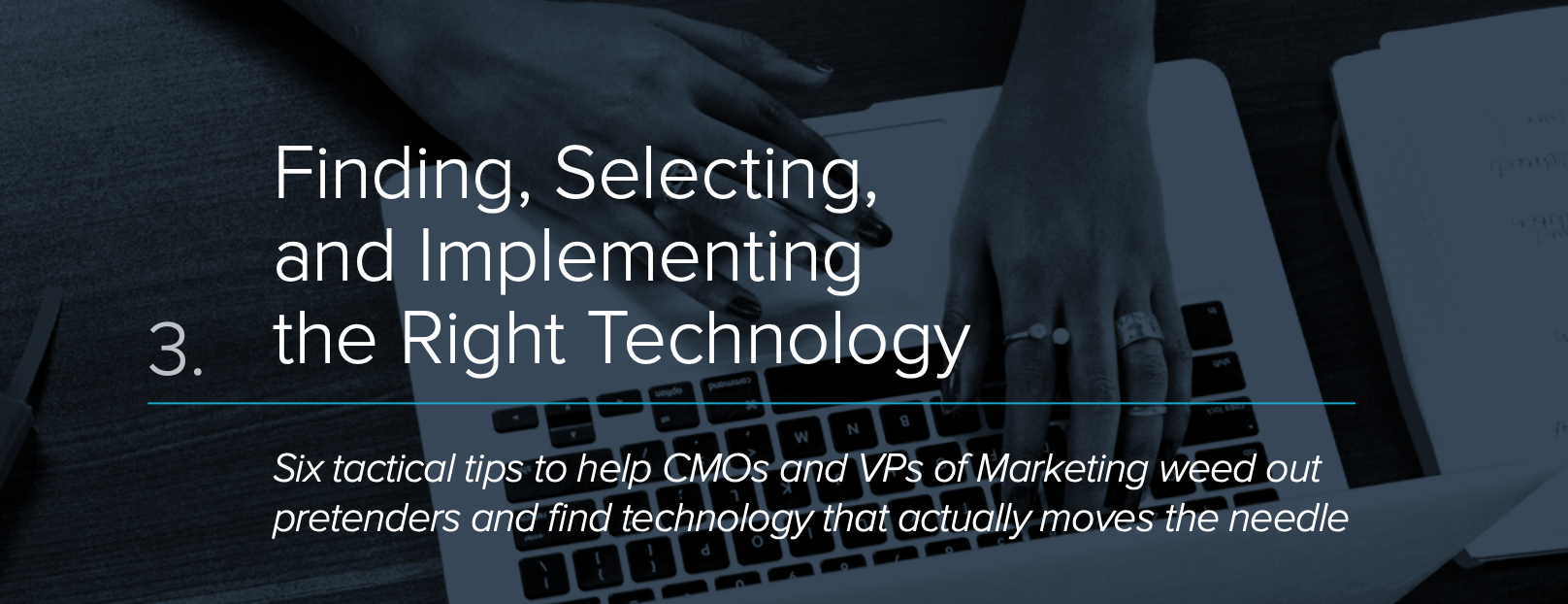
In an age where marketing is increasingly driven by technology, most marketing leaders know that one of their most important responsibilities has little to do with marketing. Instead, a big chunk of their time is spent with procurement — evaluating, buying, and implementing the right marketing technologies and then building strategies around them.
Get those decisions right, and you’ll extract maximum ROI and drive optimal business outcomes. Get them wrong, and you might be out of a job.
The problem is that choosing the “right” solution is easier said than done. With dozens of marketing channels and thousands of technologies to choose from, it’s increasingly difficult to decide where to allocate your time and budget. And, if you’re not careful, you can waste weeks evaluating vendors that may not be able to meet your needs. Worse yet, you might find yourself stuck in a contract with one of those vendors, which depletes precious resources without adding any business value.
So, maybe you’re sold on referral marketing. But how can you pinpoint the right solution to drive word-of-mouth at scale — without risking your budget or your job?

What makes things so challenging is that even when you get to the category level and narrow your choices down to just a handful of competing vendors, they’re often indistinguishable. They all sound alike and make similar promises. As a result, even though you think you’re buying a Maserati, what you actually wind up with is a rundown 1995 Honda Civic.
Further complicating things is the fact that marketers often let price dictate their decisions. While cost certainly matters, the more important factor is ROI. Consider this scenario: If you were given the choice between a $20,000 solution that delivers an ROI of 1x or a $50,000 solution that delivers an ROI of 10x, which would you choose?
To help make the vendor selection process easier for you, here are five tips that will make choosing the right referral marketing software a lot easier.
- Demand proof. Ask to see case studies from companies similar to yours that have accomplished what you aspire to do by using a referral marketing platform or solution. You’ll want to find out about things like:
- The ROI they’ve achieved using the platform
- Their satisfaction with the level of support they’re receiving
- Whether the product has evolved over time to better meet their needs
- If the vendor is responsive to questions and good at helping troubleshoot issues
- Whether they’d recommend the vendor to others without hesitation
- Ask a lot of questions. The more you learn up front, the easier it will be to make an informed decision. So when you’re evaluating a potential vendor, come prepared with a detailed list of questions. Some of the things you should ask include:
- What extra work, if any, will be required to get the technology up and running so that it will do what you need?
- Does using the technology require any special skill sets (like coding) that you may not already have on your team?
- Are any third-party integrations required to get all of the functionality you’re after?
- Can the product be easily customized? If so, will that cost extra?
- Ask to review the product roadmap. Doing so is worthwhile because it will help you understand what’s on the horizon that might be of interest to you. It’s especially important if you’re buying a product on the condition that you need a specific feature that isn’t ready yet, but is in on the way. If the vendor doesn’t have a product roadmap, it should bring into question how many people they’ve dedicated to continually improving the product to meet customer needs.
- Go beyond a handful of core features. Most vendors offer the basic features that allow marketing teams to build barebones referral marketing programs. But to drive real results over time, your brand will likely need a lot more than that — truly native mobile SDKs, automatic multi-language translation, enterprise-level security to prevent fraud, etc. As you review vendors, ask about that functionality and push them to show you how it works. A promise is only good if the vendor can actually deliver on it.
- Evaluate the levels of customer support the vendor offers. Before you make a decision, make sure you understand the difference between customer success (more proactive expert coaching) and customer support (more reactive troubleshooting), and where the vendor falls on that spectrum. Just as importantly, you’ll want to find out if experts are available to help you achieve your goals. This is critical because these experts are often well-versed in best practices and capable of helping you be much more successful than you could possibly be without them.
Ready to Take Your Referral Program to the Next Level?
For referrals to consistently deliver truly exceptional results, referral marketing must be woven into who you are and how you operate. Without structure and commitment, you’re largely hoping that good things happen and that customers inherently know to refer their friends and colleagues to your business.
That might happen. Or it might not.
As we know from the statistic we cited earlier in this guide, banking on customers to refer without any clear call-to-action or incentive to do so is a risky proposition. The far better option is to approach referral marketing just as you would any other high-value customer acquisition channel — investing in process and technology, and incorporating it into every aspect of your marketing strategy.
When you do that, the payoff can be huge.
The rewards of pursuing excellence in word-of-mouth marketing are huge, and it can deliver a sustainable and significant competitive edge few other marketing approaches can match.
